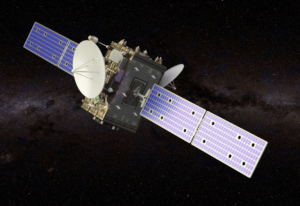Ads
SpaceX has made headlines by sending two commercial probes to the Moon, sparking curiosity about what they hope to discover there. This development marks a significant milestone in the realm of space exploration, as private companies like SpaceX are demonstrating their capability to contribute to lunar exploration. The successful launch of these probes, Blue Ghost from the United States and Hakuto-R Resilience from Japan, represents a shift in the way we approach exploring the Moon and holds the potential to disrupt future projects and partnerships.
The launch of these probes took place on a Wednesday morning at Cape Canaveral, using SpaceX’s Falcon 9 rocket as the launch vehicle. The successful deployment of the probes into trans-lunar orbit showcases the remarkable technological prowess of SpaceX and their efficiency in carrying out ambitious missions. Blue Ghost, part of NASA’s Commercial Lunar Payload Services program, designed by Firefly Aerospace, is set to explore various sections of the lunar surface with a payload capacity of up to 150 kilograms. It is scheduled to land near Mount Latreille in the Mare Crisium region on March 2, carrying 10 experiments from NASA. On the other hand, Hakuto-R Resilience, a project by the Japanese company ispace, will attempt landing in Mare Frigoris, equipped with a rover called Tenacious that can collect regolith samples from the Moon’s surface.
These missions reflect a growing trend of commercial companies participating in lunar exploration, spurred by programs like CLPS managed by NASA. Previous endeavors by companies like Astrobotic and Intuitive Machines have paved the way for these current missions, highlighting the potential for collaborative efforts between private and government entities in space exploration. The engagement of companies like Firefly Aerospace and ispace signifies a shift towards expanding the scope of space exploration beyond government agencies, fostering innovation and global collaboration in the field.
The significance of these missions goes beyond scientific achievements, as they represent humanity’s relentless pursuit of knowledge beyond our own planet. By exploring the Moon and uncovering its secrets, we are pushing the boundaries of what is possible and inspiring future generations to reach further into space. These successful missions open up new avenues for research and exploration, fueling our curiosity about the unknown and propelling us toward a future where space travel is not just a dream but a reality.
In conclusion, the launch of two commercial probes to the Moon by SpaceX marks a pivotal moment in space exploration. These missions represent a collaboration between private companies and government agencies, demonstrating the growing importance of commercial entities in advancing our understanding of the universe. As these probes continue their journey toward the Moon, they serve as a testament to humanity’s insatiable thirst for knowledge and our determination to reach beyond the confines of our own planet. The prospects of what we may discover on the Moon are endless, and these missions are just the beginning of a new era in space exploration.






